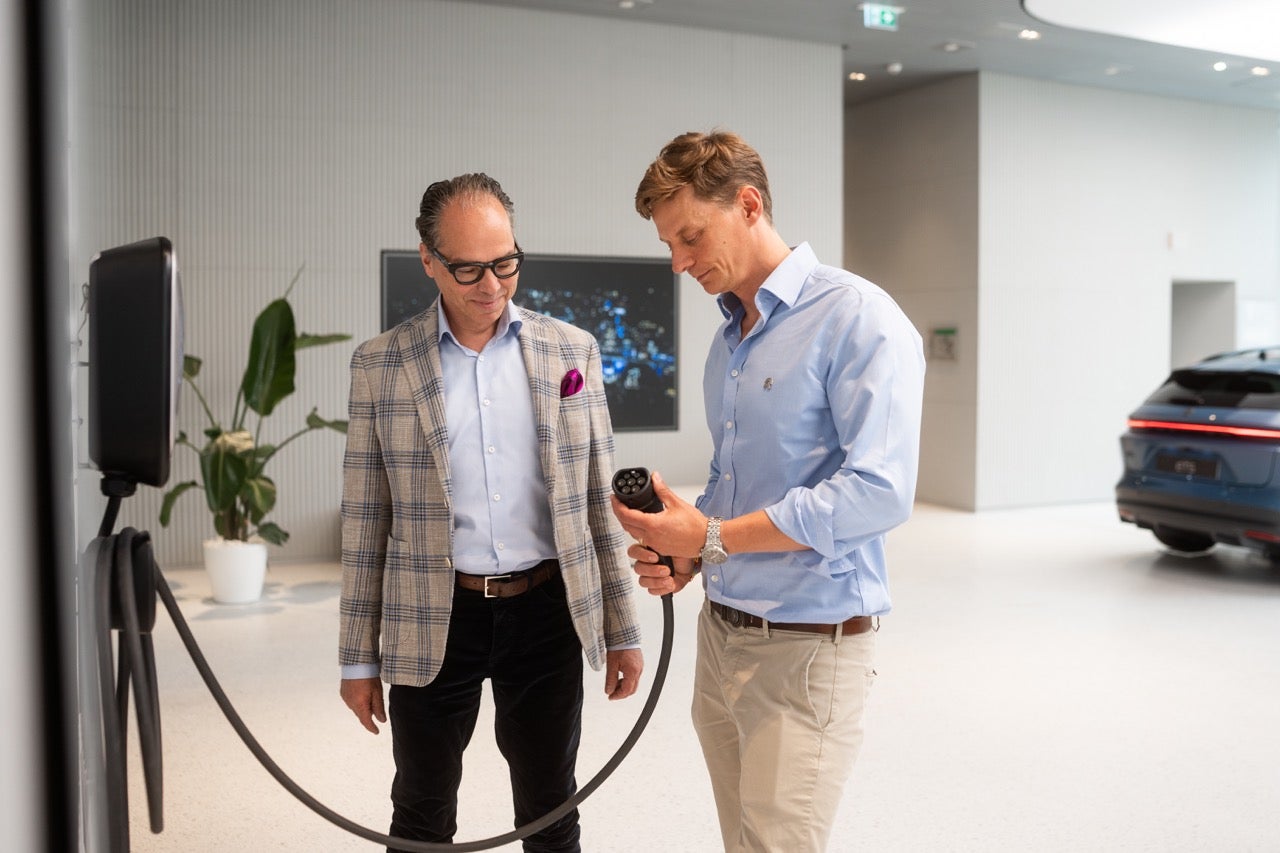House of NIO #2 – Empowering the Energy Transition: NIO Leads the Way with Advanced Energy Storage
08/30/2024 by NIO

The fusion of energy and automotive industries is reshaping how we think about transportation and sustainability. This topic takes center stage in the second episode of Season 2 of our House of NIO podcast, streaming on Spotify. Hosted at our NIO House in Berlin, the episode features two visionary experts: Maximilian Schumacher, NIO’s Energy Strategy and Innovation Lead, and Christian Malorny, one of the visionary top automotive management consultant and strategists working at Kearney. Together, they explore the concept of sector coupling and our innovative approach to integrating energy and mobility.
The challenges and opportunities of sector coupling
As global efforts to achieve a climate-neutral economy intensify, both the energy and automotive sectors face immense pressure to evolve. Schumacher and Malorny discuss the challenges and opportunities involved in merging these industries.
“In the energy and the automotive sector, we are in the middle of the biggest industrial revolution since the invention of the steam engine. Because we are completely changing both sectors, and both are very crucial for the entire industry and society too.” – Maximilian Schumacher
Christian Malorny emphasizes that the key to sector coupling lies in ensuring a reliable energy supply while leveraging renewables. Batteries, he explains, can play a dual role: powering electric vehicles (EVs) and acting as storage devices for renewable energy.
“Battery-driven electric vehicles means we can use these batteries not only for sustainability but also as storage devices.” – Christian Malorny
NIO’s integrated energy approach
Maximilian Schumacher highlights our unique approach to addressing these challenges through its power swap stations. Unlike traditional charging methods, power swap stations decouple EV charging from the grid, enabling batteries to be charged during off-peak hours when energy demand is lower. This minimizes strain on the grid while providing a seamless user experience.
“Our tool the power swap station allows us to combine batteries and connect them directly to the grid. We are actually decoupling the electric vehicle charging process from the grid, because we can charge the batteries in the power swap station – completely independent of the charging process of the car.” – Maximilian Schumacher
By integrating energy storage capabilities into power swap stations, we contribute to grid stability and support the broader energy transition. These stations are not just infrastructure for EVs – they are also a key part of a decentralized energy ecosystem.
Benefits for drivers and society
Our power swap technology offers several advantages for users:
· Speed: Batteries can be swapped in under five minutes, significantly faster than traditional charging methods.
· Flexibility: Users can upgrade to higher-capacity batteries temporarily, such as for long trips, without needing to purchase a new vehicle.
· Battery longevity: Smooth, controlled charging at power swap stations extends battery life, lowering overall costs.
“It’s even possible to use cars from other OEMs that have a permanently installed battery – by charging in both directions and using those vehicles at home as a storage device for the grid itself. But the many legal questions this poses makes it’s more complicated.” – Christian Malorny
Christian Malorny also notes that these stations create additional revenue streams by participating in energy trading and grid balancing. Maximilian Schumacher adds that this approach reduces electricity costs for NIO users, which is in line with our company’s commitment to user satisfaction.
“We are tapping several revenue streams for power substations that go beyond the charging process or the automotive use case, such as grid balancing. And we are using all those revenues to lower electricity prices for our users when they swap.” – Maximilian Schumacher
Building a sustainable future
As we continue to expand our power swap network across Europe – including to Germany, the Netherlands, and Scandinavia – we are also exploring innovative use cases, such as electricity trading and grid stabilization. These efforts underline our long-term commitment to creating an integrated energy and mobility ecosystem.
“Power swap stations are the perfect piece of the puzzle. They can connect both sectors and, for example, enable both the decarbonization of the energy sector and the electrification of the mobility sector.” – Maximilian Schumacher
Explore the second episode of Season 2 of House of NIO
We’re pushing the boundaries of what’s possible in mobility. From integrating advanced AI to prioritizing customer-first design, we’re redefining how people interact with their cars. These ideas and more are at the heart of Season 2 of the House of NIO podcast. Now streaming exclusively on Spotify, the season features six monthly episodes exploring smart electric vehicle innovations and the future of mobility. Short insider editions are also available mid-month for quick updates.
For a deeper dive into NIO’s vision for battery management, sector coupling, and the groundbreaking technology behind our power swap stations, tune in to Episode 2 of the second season of our House of NIO podcast.
Explore the fascinating insights shared by Maximilian Schumacher and Christian Malorny on the challenges and opportunities of sector coupling in Episode 2 of Season 2 of the House of NIO podcast.













